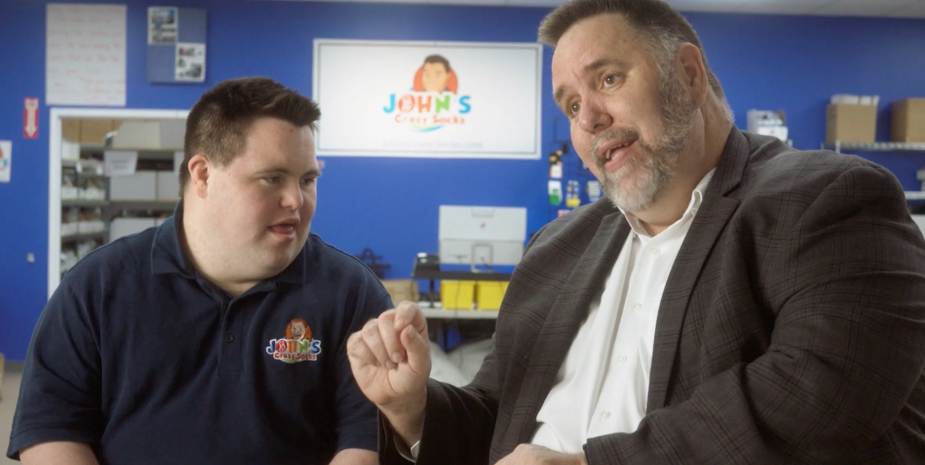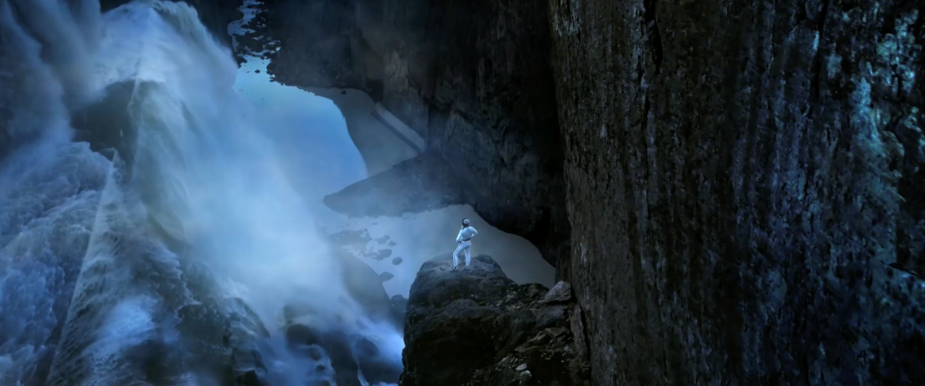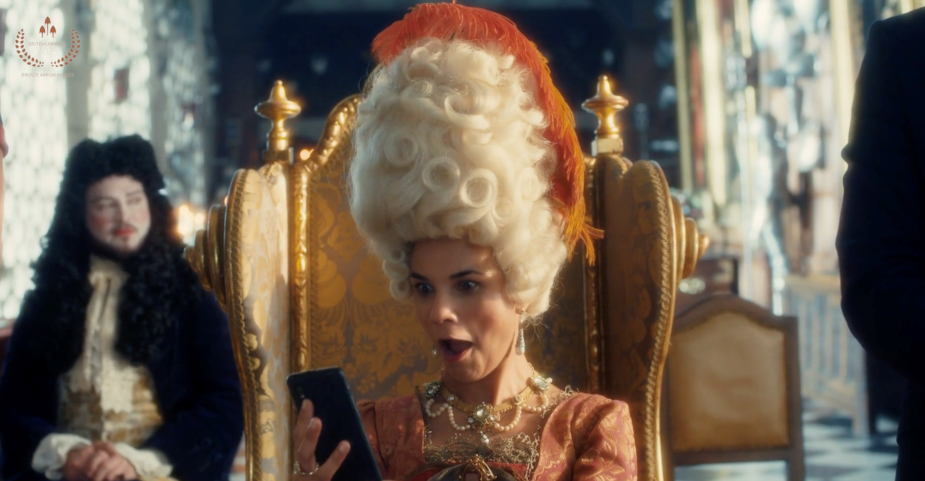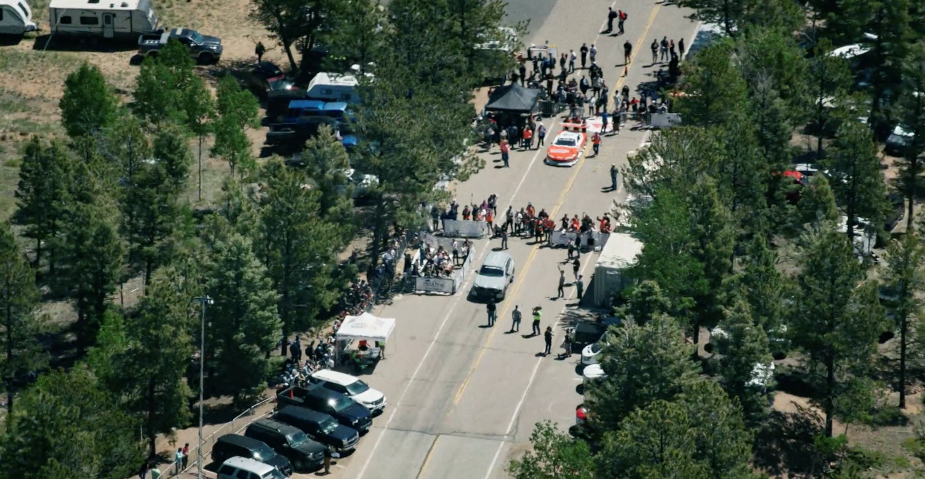
F1 Proves It’s Time for Brands to Become Creators Not Just Advertisers

Brad Pitt and Damson Idris in F1: The Movie © Warner Bros. Picture / Apple Original Films
We take no joy in the news today that that shares in ad agency holding companies are down between 15% and 44% year on year while the FTSE is up 9%. Or that Google and Meta take 78% of the UK’s entire ad spend. TV Ads used to be what we were all about but traditional advertising models aren’t cracking it any more. Fortunately, the new paradigm of branded entertainment is emerging as the most likely solution and we believe it’s going to be better for everyone, advertisers and consumers alike. And you don’t have to just take our word for it.
The new F1 movie together with three brand new, ground breaking pieces of research are evidence that brands must evolve from advertisers into creators of original entertainment. The three studies are an extraordinary McKinsey report with insights on brand-produced content, the eye-opening report from Boston Consulting Group (BCG) 'When Traditional Advertising is Dead' and McKinsey's enthralling 'attention equation' study. If you haven’t got the time to read them all, this article brings all that new thinking together.
The death of traditional advertising – what, again?
How many times have you heard it before: the effectiveness of traditional advertising is waning?
Michael Sugar, Oscar winning producer of movies like Spotlight and The Report and TV series Wireless and The OA, points out that "We know that ads are being skipped. We also know that the thirst for attention is ever increasing, that audiences are hard to reach and harder to keep".
This sentiment is echoed by BCG, noting that "Legacy media is declining as traditional advertising loses its grip". In the UK, Ofcom recently reported that for the first time, online platforms (71%) have surpassed television (70%) as the primary source of news for UK adults.
Big agency holding companies are clinging to their model for all they’re worth but they simply don’t have the personnel, expertise or understanding to be in the entertainment business.
Don’t interrupt the entertainment
The core problem is that traditional advertising interrupts rather than engages. And a multi-screening audience can disengage from your brand message without even leaving the room to put the kettle on or go to the loo. The traditional approach of paying way more for the media than for the message is both economically inefficient and creatively restrictive.
BCG proposes that by 2035, traditional media outlets will have been replaced by a digital ecosystem in which every company becomes its own media creator with 'digital platforms like Instagram, YouTube, and TikTok emerging as primary channels for content delivery'. Some would argue we’re already there for younger consumers.
At Original Branded Entertainment our extensive work with Microsoft and GitHub around the world proves these clients have achieved their ideal balance. Both brands know that their perfect audiences naturally gravitate to their own media channels. So they spend their money on many small productions and precisely zero on media.

The attention economy revolution
It’s important to understand that attention isn’t simply the amount of time spent. We have to consider valuable time spent, driven by focus and intent. McKinsey's 'attention equation' research found that traditional commercial factors explain “only about two-thirds of the variance in attention monetisation. The other third is driven by the quality of consumer attention, or the 'attention quotient'". Brands that grasp and leverage high-quality attention are poised to outperform significantly those merely chasing volume metrics.
The economic case for investing in branded entertainment
This one is a complete ‘no-brainer’. Branded entertainment transforms marketing spend from an expense into an investment, and it should be funded accordingly. Sugar argues "The opportunity for the brands is to actually own the content, which gives them multiple benefits. They can impact the creative rather than integrate into someone else's...and they can turn this media spend into an investment with its own ROI".

The Range Rover Sport film that we produced was the longest ad ever to run on British TV but most of its exposure was on YouTube. In its many various guises it’s racked up over 18m views, the equivalent of two million hours! That’s equal to 240 million 30 second commercials: what would that have cost in traditional media? And that’s entertainment people have sought out and watched in their own time.
Low barrier to entry
And the economics are surprisingly accessible. Sugar notes that "We have brands investing in projects for $100,000 or less. Every project is a new business, and the brands are invited to provide the seed capital". This sum is a mere fraction of typical advertising campaigns, yet it offers genuine ownership and creative control.
McKinsey's research identifies 'content lovers' as a distinct consumer segment, representing 13% of consumers who "spend 2.4 times more money on content and consume 1.7 times more content than the average consumer". These high-value audiences are precisely those most receptive to quality branded entertainment.
F1 – a winning formula
From the moment Liberty Media bought F1 for $8bn in 2017 they began revolutionising the brand and became Creators. Drive to Survive began in 2019 and entirely rewrote the book on branded entertainment, scooping up tens of millions of new viewers – many of them Americans and females new to the sport. Amazingly, F1 had always owned the rights to every frame of footage on every grand prix 'from setup to tail-lights'. With those Netflix series, they leveraged that to its natural conclusion.
With F1: The Movie they went a step further even selling sponsorship on the race suits and race cars. Some were to the same advertisers that sponsor F1 (IWC and EA Sports) and some brand new (Expensify and Shark Ninja). These deals alone for the fictional film brought in $40m to add to the $461m box office on production costs of $200m.
Cultural impact and consumer savvy
The power of entertainment to drive cultural change is undeniable. Sugar provides historical examples: "We know that The Queen's Gambit changed the world of chess by accident or that Back to the Future helped launch the skateboarding industry. We know that the movie Sideways hurt the merlot business when Paul Giamatti said what he said about merlot". Brands should aim to create such cultural influence intentionally by making watchable, shareable entertainment.

The new cabin safety film we made for British Airways appeared on YouTube and racked up 2m views before it was even launched on the planes. That’s 10m minutes of engagement. For an airline safety video! The film itself also crossed over into news media, featuring on Radio 4’s Today programme, and in press from The Guardian to Washington Post to Tatler. Why? Because it’s funny and it looks bloody amazing.
Happy to buy but don’t want to be sold to
Authenticity is also vital as consumers become increasingly discerning. According to McKinsey's research "We don't want to be sold to. In this climate, you need to sell a product to the consumer that has an authentic connection with the brand so that they believe that the brand understands the consumer". Branded entertainment fosters this authentic connection in ways traditional advertising cannot. BCG also highlights that "Instead of scripted promotions, unscripted and narrative-driven formats are winning".
An AdAge article on F1: The Movie underlined the point, “the primary driver (pun intended) was the legwork F1 put in toward building authenticity to nurture its growing fanbase”.
The premium content advantage
Sugar's model focuses on creating commercially driven entertainment that is “good enough for Netflix, Amazon, Apple or linear television to want to air. And in that scenario, you don't have to buy the eyeballs. You're delivering a full show". Our BA film drew in multiple Oscar and BAFTA-winning talent, eager to work with our creators on such an obviously entertaining project, and those big-time production values made all the difference.
This approach leverages the existing entertainment infrastructure, offering brands premium placement and association. Quality is essential, as Sugar emphasises, "The key here is that creators do not go to brands with the stuff they can't get made in Hollywood. Brands want the best stuff".

A good case in point is BMW’s Pikes Peak challenge. Over two programmes, viewers are treated to a gripping human story with action-movie production values as BMW tries to break the record for climbing this famous peak in their new SUV.
BCG also notes that companies are now “forming partnerships with media experts to produce high-quality, engaging material". This "strategic move blurs the line between marketing and media, positioning brands as storytellers first and advertisers second".
Talent and creative partnerships
A compelling aspect of Sugar's model is its transformation of brand-talent relationships. by adopting an entertainment-first approach and partnering with the right talent brands can become creative enablers rather than commercial constrainers. The results are evident: "We're finding we can partner brands with talent they previously offered millions of dollars to, to no avail. Now the brands are spending much less money to partner with that talent by being producing partners and making something together".
Happily, at OBE we have a number of creators who have made feature films and high-end television, so plugging into this network of talent is one only a phone call away.
Measuring success
Branded entertainment requires a different measurement approach than traditional advertising metrics, which focus on immediate conversion. Sugar acknowledges, "I think brands are missing the point by being so focused on data and measurement. Of course, both are important. But just because you can measure something doesn't mean it's working".
McKinsey's attention equation research provides a framework for better measurement. The study reveals that "the more focused consumers are, the more likely they are to spend. Across consumers, a 10 percent increase in average focus paid across media is associated with a 17 percent increase in spend across media".
The future of branded entertainment
Sugar's vision for the future is ambitious yet achievable: "My hope and expectation is that, in the next five years, 50 percent of what is consumed as premium television will involve a brand from the beginning". This transformation aligns with broader industry trends where "the cost of production is going up, and the appetite to spend is going down".
The convergence of brand needs and entertainment industry challenges creates an unprecedented opportunity. As Sugar notes, "I see the streamers leaning in more. And we're going to see more need for brands to connect to the audience in a way that works and that's entertainment".
BCG’s article projects a future where "companies are beginning to transform into media entities that focus on storytelling rather than mere product promotion". It also suggests that "bundled digital services will become common as consumers face subscription limits".
Every brand could be a content creator
The evidence is clear: traditional advertising is losing its effectiveness, but branded entertainment offers superior engagement, recall, and cultural impact. McKinsey's attention research demonstrates that "quality and relevance, not just quantity, of attention goes a long way in determining success".
Brands can cost-effectively create premium entertainment that drives both cultural influence and business results, but Brands that continue to rely solely on traditional advertising risk marginalisation in an attention economy that favours creators over interrupters.
The choice is clear: evolve into entertainment creators or risk obsolescence in the battle for consumer attention. As Sugar concludes, "…the opportunity at this moment is for brands to reach the consumer directly through entertainment, rather than simply advertising against it".









